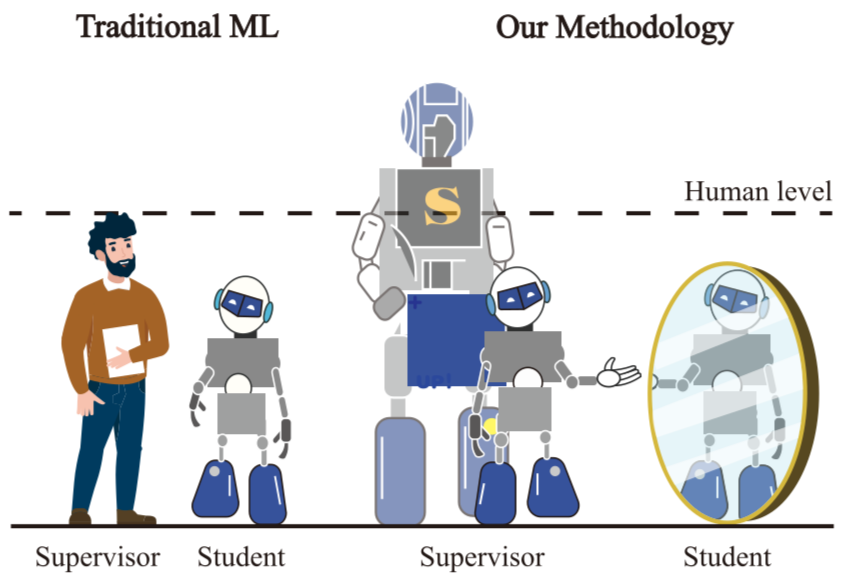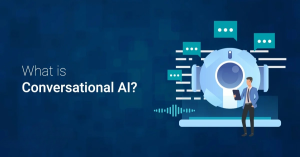Explore how Adaptive Machine Learning Models enable continuous learning, real-time personalization, and operational agility. Discover applications across finance, healthcare, retail, and IT, and see why adaptive AI is the future of enterprise intelligence.

-
Introduction
-
What Are Adaptive Machine Learning Models?
-
Technological Foundation of Adaptive ML
-
Why Enterprises Adopt Adaptive ML
-
Implementing Adaptive ML in Enterprise Architecture
-
Industry Applications
-
Challenges in Adaptive ML
-
Future Outlook
-
Conclusion
Introduction: The Age of Continuous Learning
Enterprises today operate in a world of constant change. Traditional ML models are static—they learn once, deploy once, and degrade over time.
Adaptive Machine Learning Models, however, continuously learn from new data, self-adjust parameters, and evolve strategies autonomously. For businesses, adaptive ML is more than technology—it’s a strategic advantage, turning static analytics into living, self-improving systems.
The digital enterprise of today operates in a world that never stops moving. Data changes by the second, customer behaviors shift in real time, and competitive landscapes evolve overnight. Traditional machine learning (ML) systems, while powerful, are fundamentally static—they learn once, deploy once, and degrade over time as their assumptions become outdated.
Enter Adaptive Machine Learning Models — the next evolution of artificial intelligence. These self-improving systems learn continuously from new data, adjusting their parameters, strategies, and predictions autonomously. They do not merely react to change; they evolve with it.
For enterprise leaders, adaptive ML represents more than a technological shift; it’s a strategic revolution. It bridges the gap between automation and autonomy, turning static analytics pipelines into living ecosystems capable of intelligent decision-making at scale. Whether it’s optimizing global logistics, personalizing real-time customer interactions, or forecasting financial risk, adaptive learning enables enterprises to stay ahead of change rather than chase it.
1. What Are Adaptive Machine Learning Models?
From Static Systems to Dynamic Intelligence
Traditional machine learning models are built through a linear process: collect data, train the model, deploy it, and periodically retrain when performance drops. This “train-deploy-retrain” cycle is costly and inefficient. The longer a model runs without retraining, the more it suffers from model drift—a degradation in accuracy caused by shifting data patterns.
Adaptive Machine Learning Models, by contrast, are designed for continuous learning. They ingest new data streams, identify deviations from historical patterns, and update their parameters automatically—sometimes in real time. This self-adjusting capability makes them indispensable for dynamic environments such as fraud detection, personalized marketing, and predictive maintenance.
Core Principles of Adaptivity
Adaptive learning models are built on three fundamental principles:
- Continuous Feedback Loops: Every interaction feeds the system new information, refining predictions without full retraining.
- Dynamic Optimization: Algorithms constantly balance performance and efficiency, adapting to new variables or noise.
- Contextual Awareness: Adaptive models learn from not just data, but context—time, location, sentiment, and even user intent.
By embedding feedback and context into the learning cycle, adaptive ML models simulate a human-like understanding of evolving environments.
2. The Technological Foundation of Adaptive Intelligence\

Behind every adaptive model lies a convergence of advanced AI methodologies, scalable infrastructure, and intelligent orchestration.
Online Learning Algorithms
Unlike batch learning, where models train on large datasets at once, online learning processes data incrementally. Each new data point slightly updates the model, maintaining accuracy over time. Algorithms like stochastic gradient descent (SGD) and Bayesian online learning form the backbone of adaptive pipelines.
Reinforcement Learning (RL)
In reinforcement learning, models learn by trial and error—receiving rewards for correct decisions and penalties for poor ones. When embedded into enterprise workflows, RL allows AI systems to self-correct and optimize strategies in complex, uncertain environments such as autonomous operations, financial trading, or robotic process control.
Transfer and Meta-Learning
Adaptive models often employ transfer learning, leveraging pre-trained models and fine-tuning them with new data for specific tasks. Meta-learning, or “learning to learn,” further accelerates this process by enabling systems to adapt faster with fewer examples—a crucial advantage in data-scarce domains like healthcare or cybersecurity.
Cloud-Native and Edge Integration
Modern adaptive ML runs on cloud-native architectures with containerized services, scalable APIs, and edge AI deployment. This ensures models can learn and update across distributed systems—processing real-time data where it’s generated, from IoT sensors to mobile apps.
3. Why Enterprises Are Moving Toward Adaptive Machine Learning Models

Adaptive ML isn’t a research experiment anymore—it’s a business necessity. As data velocity and variety grow exponentially, organizations that rely on static models risk falling behind.
Combating Model Drift and Data Volatility
Model drift remains one of the biggest operational challenges in AI. Market conditions change, customer behaviors evolve, and external shocks—like economic shifts or global crises—render old patterns obsolete. Adaptive models monitor data distributions continuously and automatically recalibrate themselves, ensuring ongoing reliability.
Real-Time Personalization
Adaptive models enable real-time decision-making for personalized experiences. A retailer can dynamically adjust product recommendations based on live browsing behavior. A financial platform can tailor investment insights as user portfolios fluctuate. This hyper-personalization drives engagement and retention.
Scalable Intelligence Across Operations
Enterprises now require AI that can scale across diverse use cases—from HR analytics to IT automation. Adaptive ML delivers horizontal scalability, applying learning from one domain to another. For instance, insights from predictive maintenance can inform supply chain optimization or customer service improvements.
Enhanced Business Agility
Adaptive learning transforms enterprises into agile ecosystems. Instead of waiting months for data scientists to retrain models manually, adaptive systems respond instantly to shifts in data. The result: faster innovation cycles and sharper competitive edges.
4. Implementing Adaptive ML in Enterprise Architecture
Integrating with MLOps Pipelines
Adaptive models thrive in environments built on MLOps (Machine Learning Operations). These pipelines combine continuous integration (CI), continuous delivery (CD), and continuous training (CT). Automated retraining triggers, version control, and performance monitoring ensure smooth deployment and governance.
Workflow Automation and Model Monitoring
AI-driven orchestration tools like Kubeflow, Vertex AI, or AWS SageMaker manage adaptive model lifecycles. These platforms monitor drift, trigger retraining events, and visualize performance metrics—all in real time. Combined with observability tools, they make adaptive AI both transparent and accountable.
Integration with Enterprise Systems
Adaptive ML connects seamlessly with ERP, CRM, and analytics ecosystems through APIs. For example:
- ERP systems use adaptive forecasting to optimize inventory.
- CRM platforms adjust lead-scoring models as user behaviors change.
- HR systems refine candidate-matching algorithms using fresh performance data.
Governance, Compliance, and Explainability
In regulated industries like healthcare and finance, adaptive ML must maintain transparency. Explainable AI (XAI) frameworks and AI governance platforms ensure that continuous learning doesn’t compromise compliance or fairness. Enterprises must maintain audit trails, performance baselines, and ethical oversight.
5. Industry Applications of Adaptive Machine Learning Models

Finance: Real-Time Fraud Detection
In financial systems, patterns of fraudulent activity evolve daily. Adaptive models analyze transactions, user behavior, and device data to detect anomalies instantly. As fraudsters innovate, adaptive AI evolves faster—learning from every new attempt.
Healthcare: Dynamic Diagnostics
Healthcare data changes constantly with new research, treatments, and patient responses. Adaptive ML powers personalized diagnostics, adjusting treatment recommendations as conditions evolve. It supports precision medicine, where therapies are optimized per individual based on real-time outcomes.
Retail: Hyper-Personalized Commerce
E-commerce platforms thrive on relevance. Adaptive ML predicts preferences dynamically—adjusting pricing, promotions, and recommendations based on micro-behavioral shifts. For example, if a user abandons a cart multiple times, the model adapts its messaging tone and timing to recover the sale.
Manufacturing: Predictive Maintenance
Factories powered by IoT sensors generate massive real-time data. Adaptive models detect minute deviations that signal equipment wear or process inefficiency. By predicting failures before they occur, enterprises reduce downtime and save millions in operational costs.
IT Operations: Autonomous Service Management
Adaptive ML fuels AIOps (Artificial Intelligence for IT Operations). Systems autonomously detect anomalies, resolve incidents, and allocate resources intelligently. As infrastructure complexity grows, AIOps ensures resilience through self-learning automation.
6. Challenges in Adaptive Machine Learning
While the promise of adaptive learning is immense, its implementation demands careful design and governance.
Data Drift and Bias Amplification
Continuous learning can unintentionally reinforce existing biases if feedback loops aren’t monitored. Enterprises must employ bias detection tools and retraining validation checks to ensure ethical AI behavior.
Computational Complexity
Adaptive models require high computational power for real-time updates. Efficient data pipelines, GPU acceleration, and distributed learning architectures mitigate these constraints, but infrastructure optimization remains critical.
Governance and Versioning
When models evolve autonomously, version control becomes complex. Organizations must implement strict MLOps governance policies to track model lineage, ensure auditability, and preserve accountability.
Balancing Autonomy with Oversight
The ultimate challenge is finding equilibrium between automation and human judgment. Adaptive AI should augment, not replace, strategic decision-making. Human oversight ensures interpretability and ethical alignment.
7. Future Outlook: Toward Self-Governing AI Ecosystems
The trajectory of adaptive ML points toward a future of autonomous, self-regulating intelligence—systems capable of lifelong learning without explicit human intervention.
Lifelong Learning and Cognitive Adaptation
Next-generation models will embody lifelong learning, continuously expanding their knowledge across domains. Imagine an AI that not only predicts customer churn but also learns new causal factors as market trends evolve—without retraining.
Autonomous AI Operations (AIOps 2.0)
Adaptive ML will underpin the next era of AIOps, where IT systems manage themselves. Infrastructure will self-scale, self-heal, and self-optimize, freeing human teams for innovation rather than maintenance.
Hybrid Human-AI Collaboration
As adaptive intelligence matures, collaboration will shift from control to co-creation. AI will handle real-time data optimization, while humans focus on strategic design, ethics, and creative problem-solving—a symbiosis of logic and intuition.
The Strategic Edge for Enterprises
By 2030, Gartner predicts that over 70% of enterprise AI initiatives will leverage adaptive models. Early adopters are already gaining competitive advantages in speed, precision, and scalability. The message is clear: adaptability isn’t optional—it’s existential.
Conclusion: The Intelligence That Never Stops Learning
In an era defined by uncertainty, Adaptive Machine Learning Models represent stability through evolution. They are not just smarter algorithms—they are the architecture of resilience, enabling enterprises to learn, respond, and lead in real time.
These models blur the boundary between human intuition and machine precision, transforming AI from a tool into a living system. For business leaders, the call to action is simple yet profound: invest in adaptability. Because in the future of enterprise intelligence, the most adaptive will thrive, and the static will fade.
Adaptive Machine Learning Models don’t just learn from the world—they learn with it. And in doing so, they shape the intelligent enterprises of tomorrow.


